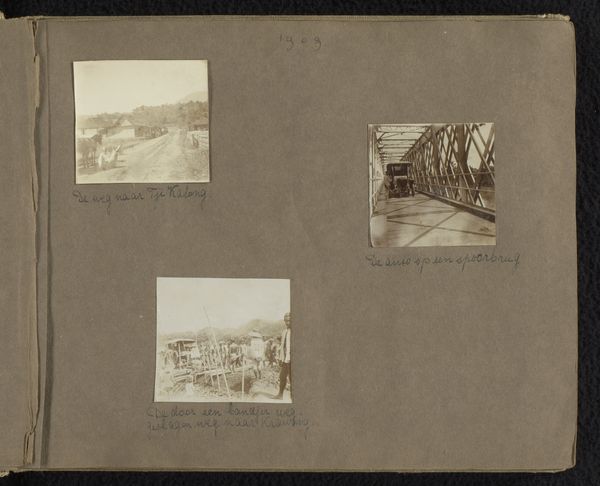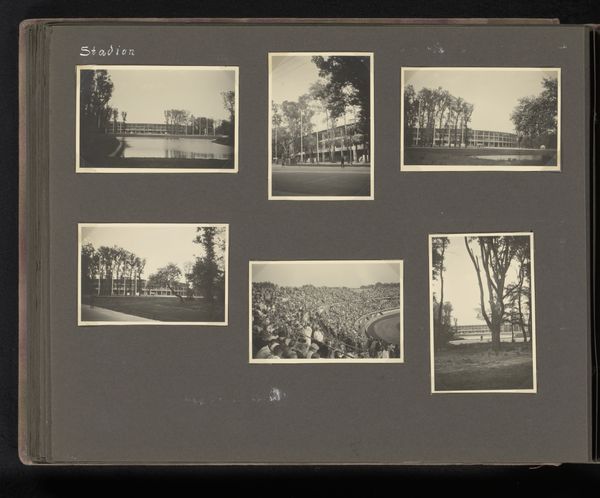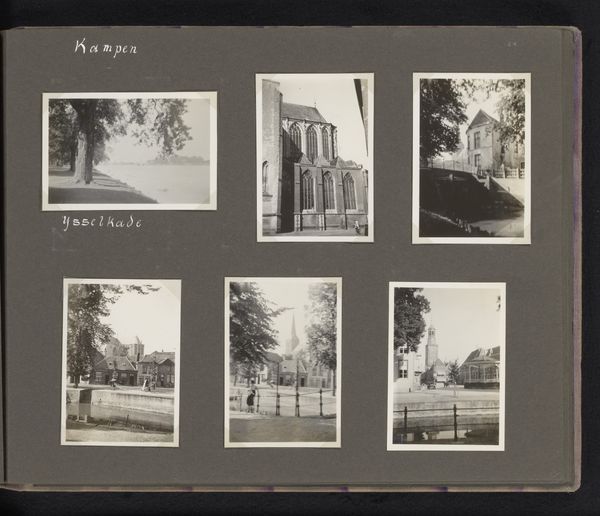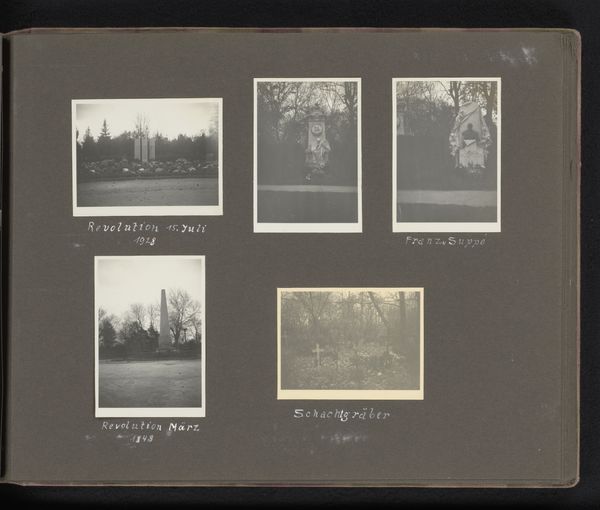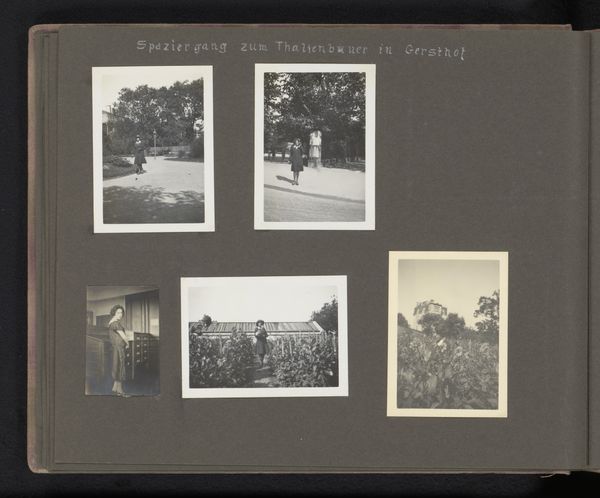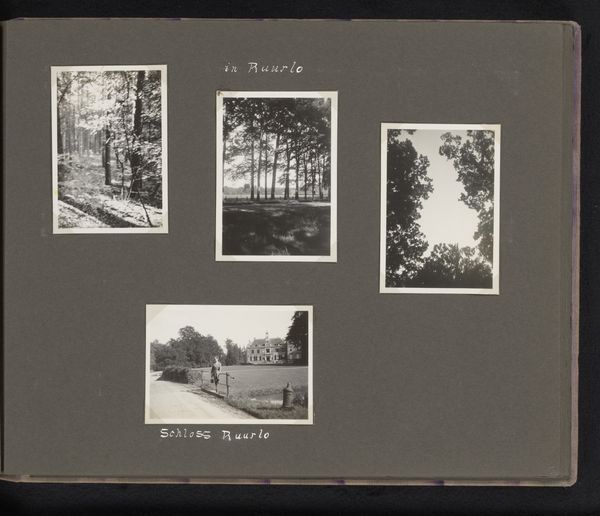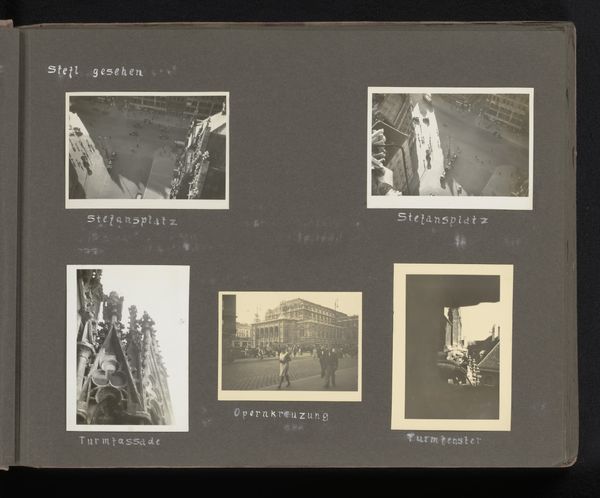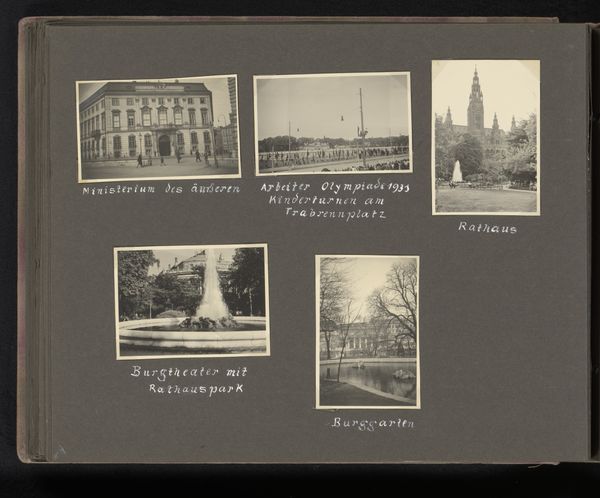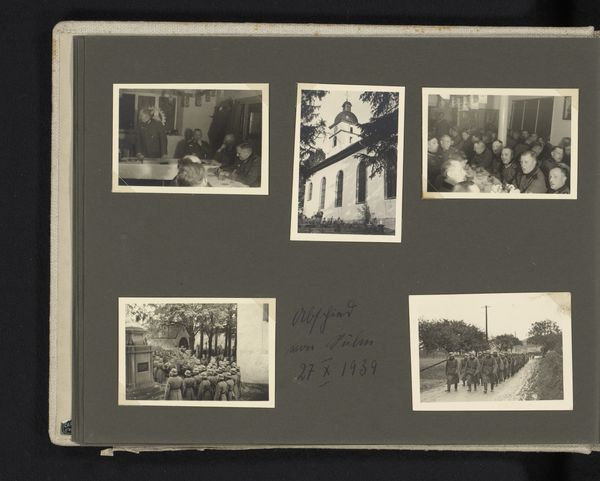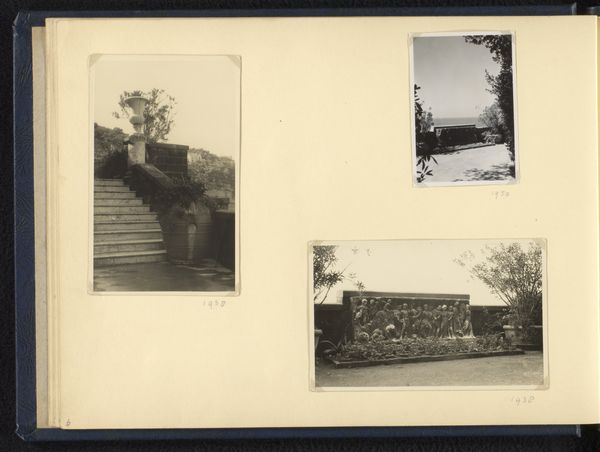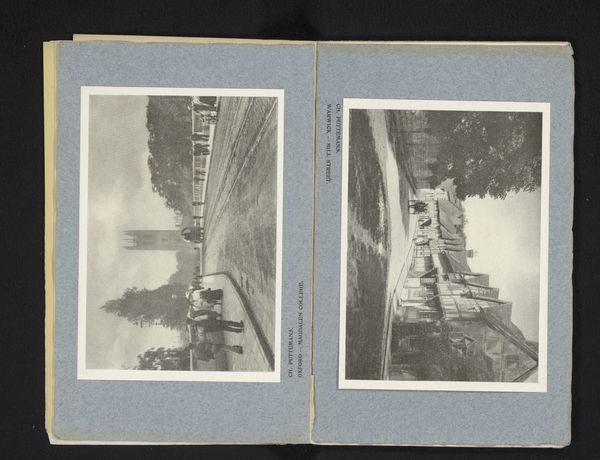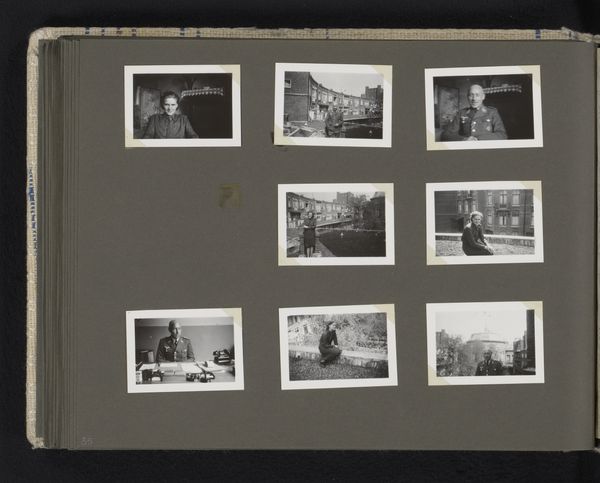
photography, gelatin-silver-print
#
portrait
#
landscape
#
photography
#
gelatin-silver-print
#
cityscape
#
modernism
Dimensions: height 236 mm, width 310 mm
Copyright: Rijks Museum: Open Domain
Editor: Here we have Berti Hoppe's "Bezoek aan Parijs en Brussel," created between 1932 and 1935. It's a gelatin-silver print featuring several photographs reminiscent of postcards, each capturing different landmarks. I find the collection a bit melancholic, evoking a personal, perhaps lonely, journey. What catches your eye, or how do you interpret this collection of images? Curator: This work resonates with themes of displacement and identity that were quite prevalent during the interwar period. The curated presentation, resembling a personal travel album, begs the question: Whose journey is being documented and for what purpose? Considering the rise of fascism and political instability during this period, could this "Bezoek aan Parijs en Brussel" be viewed as a quest for belonging or an attempt to define oneself amidst societal upheaval? What feelings does the artist try to evoke here by portraying public places with only very few people? Editor: That's fascinating. I hadn’t considered the political context so directly. I was mostly reacting to the emptiness of the spaces. Your framing encourages a deeper look into the sociopolitical motivations that influenced Hoppe's choice of subject and composition, especially in these iconic, but relatively empty, spaces. I also wonder how being a woman influenced her outlook. Curator: Precisely. These are the critical questions. Consider also the photographer's gender. In a male-dominated field, how might Hoppe have been positioning herself through this very personal yet public display of photographic travelogues? Are we looking at a subversion, perhaps a claiming of space, both geographically and artistically, typically denied to women? Editor: That's a powerful point. Seeing it as a claiming of space recontextualizes my initial sense of loneliness into a sense of agency. Thanks to your expertise, I’m now considering the work in a vastly more complex, nuanced light. Curator: And that's precisely why art history must be in constant dialogue with contemporary theory. Artworks like these reflect broader historical and social struggles for recognition, identity, and, indeed, freedom. Looking at the historical roots provides new lenses for analysis.
Comments
No comments
Be the first to comment and join the conversation on the ultimate creative platform.
